Navy Vet Describes Line-Crossing Ceremony That Looks Like Torture in Vintage Photos: 'It Was Fun at the Time'
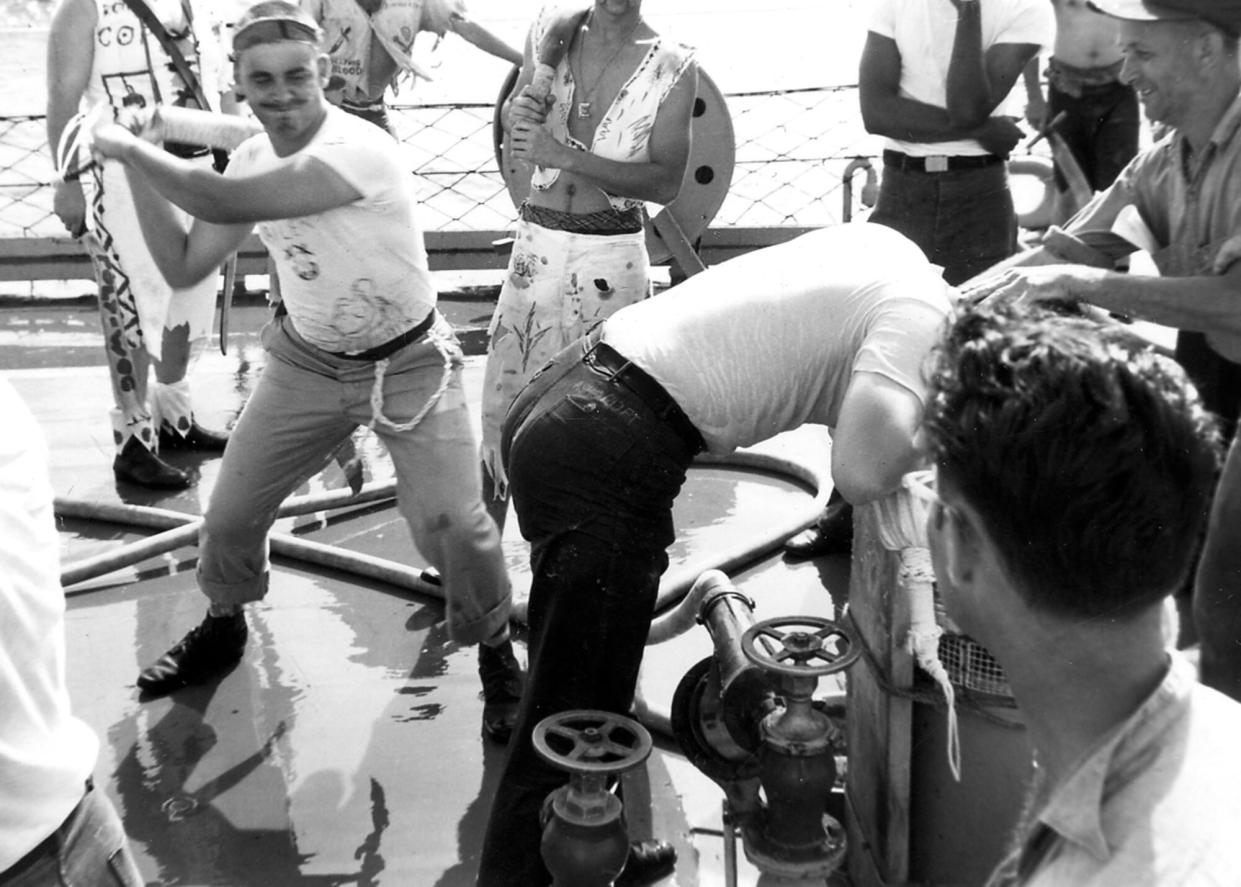
Vintage photographs by Dzintars Dale
There's a long-standing tradition among sailors on U.S. Navy ships when they cross the equator: Those onboard who've already experienced the passage, called shellbacks, perform an elaborate initiation of those who hadn't — the pollywogs.
Joe Schmidt joined the Navy in 1959 when he was 17 years old. As a signalman third class, he first crossed the equator that year and made a second crossing in 1961, so he was both a pollywog and a shellback more than 60 years ago, when line-crossing ceremonies were more agonizing for the uninitiated than they are today.
Now a wedding photographer on Long Island, N.Y., Schmidt recently caught up with an old shipmate and reminisced about what they endured while "crossing the line," a maritime tradition that dates back centuries.
"He said to me, ′That was the worst day of my life in the Navy. Absolute worst day because there was no mercy,'" Schmidt tells PEOPLE of their conversation.
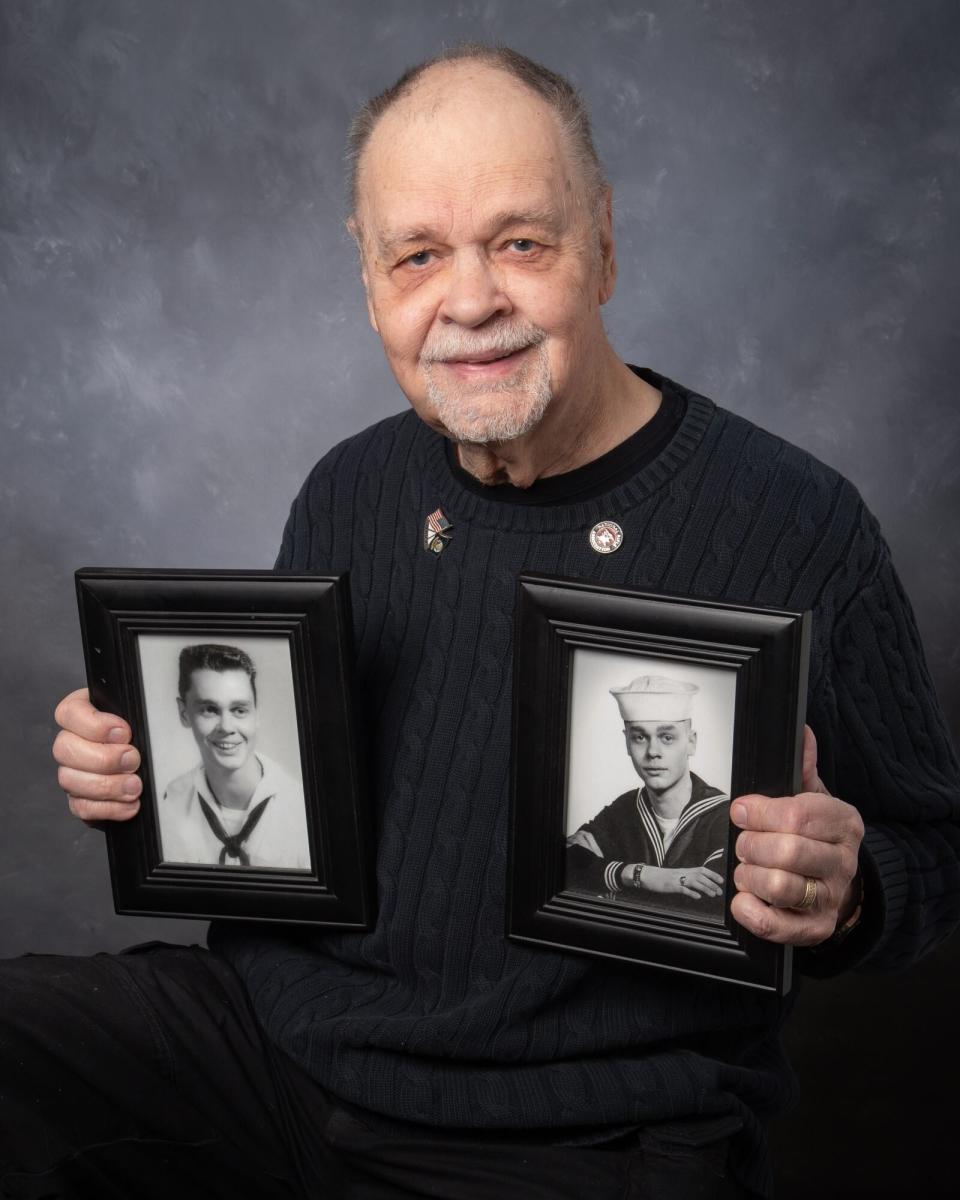
Photograph by David Paone
The former sailor provided some unsettling images of a line-crossing ceremony that were taken in 1961 and described his experience to PEOPLE.
Preparation began days before the crossing. Shellbacks collected food scraps and filled metal garbage cans with the disgusting muck, according to Schmidt. They also put together makeshift costumes, usually to look like pirates.
The night before the crossing, the captain would go before a sailor who'd been designated "Neptunus Rex" — or King Neptune, a reference to the Roman god of the sea — and ask for his crew to be spared the horrors planned for the following day.
The request, Schmidt says, was always denied.
On the day of the crossing, a designated "royal barber" butchered the pollywogs' hair, Schmidt says. Then the ceremony began with the shellbacks spraying each pollywog with high-pressure fire hoses before getting whipped with shillelaghs.
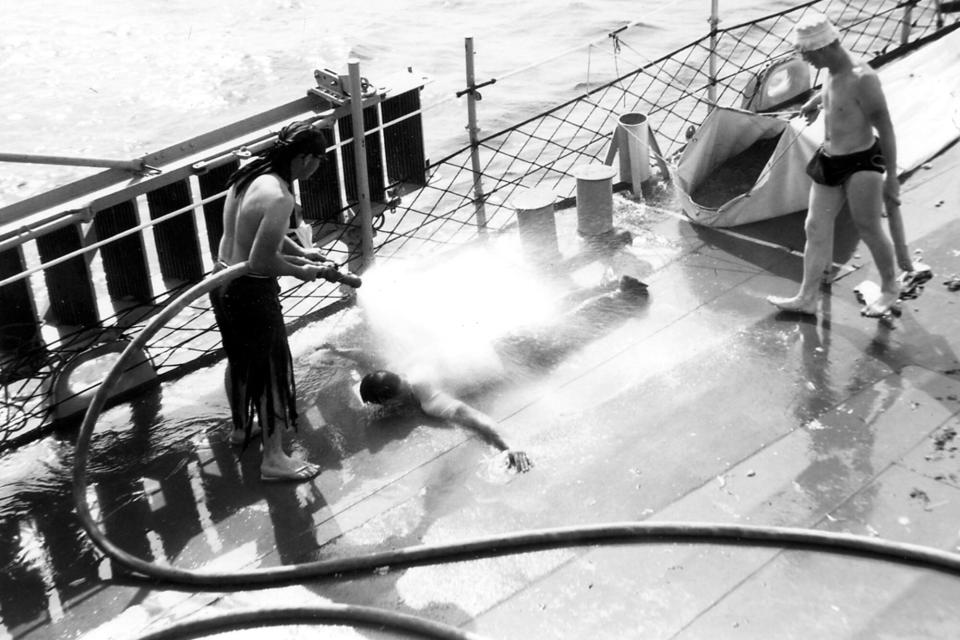
Vintage photographs by Dzintars Dale
Pollywogs were drenched, Schmidt explains, "so that your clothing sticks to you and when you get beat up, it's worse."
"You'd get whacked on the rear end," he says, adding that on his ship the shillelaghs were made of cutup hoses.
The refuse that had been collected for days was rubbed in the faces of the pollywogs and placed in a long canvas tube, according to Schmidt, who says they were forced to crawl through before facing the firehouse again, "which was terrible because this water really stings when it hits you."
"You couldn't sit down, of course," Schmidt says of those sailors left "black and blue" after being on the receiving end of a shillelaghs.
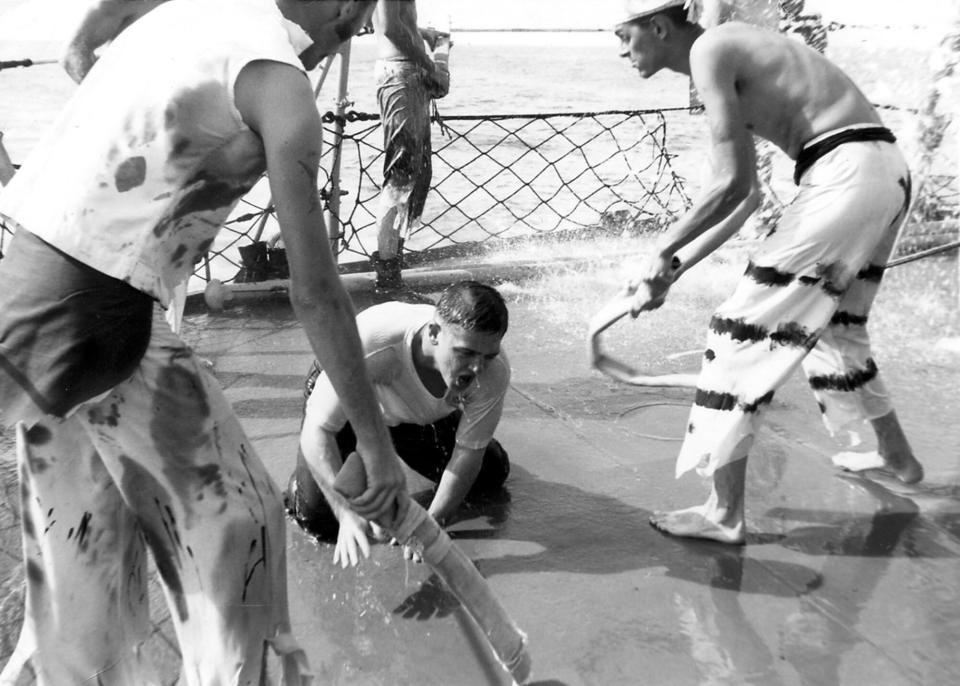
Vintage photographs by Dzintars Dale
There could be hundreds of people on a ship who were crossing the equator for the first time, so the ceremony might take several hours. Officers — including the captain — were not spared, Schmidt says.
One sailor, though, was singled out. "Probably the fattest guy on the ship with the hairiest belly" was dubbed "the baby" and wore a diaper for his role in the ceremony, Schmidt tells PEOPLE.
Shellbacks mixed mustard, ketchup, grits and whatever else they could find to smear it on the sailor's torso before pollywogs got on their hands and knees and had their faces rubbed in the mess.
RELATED: Decorated Navy SEAL Commander Found Dead in San Diego Home at 47: 'He Was Outstanding'
At Schmidt's 1961 crossing, a cattle prod was used in the initiation to torment pollywogs. It's not clear why a Navy destroyer was equipped with the instrument, if not for this very use.
"I don't know where that thing came from," he says. "I have no idea."
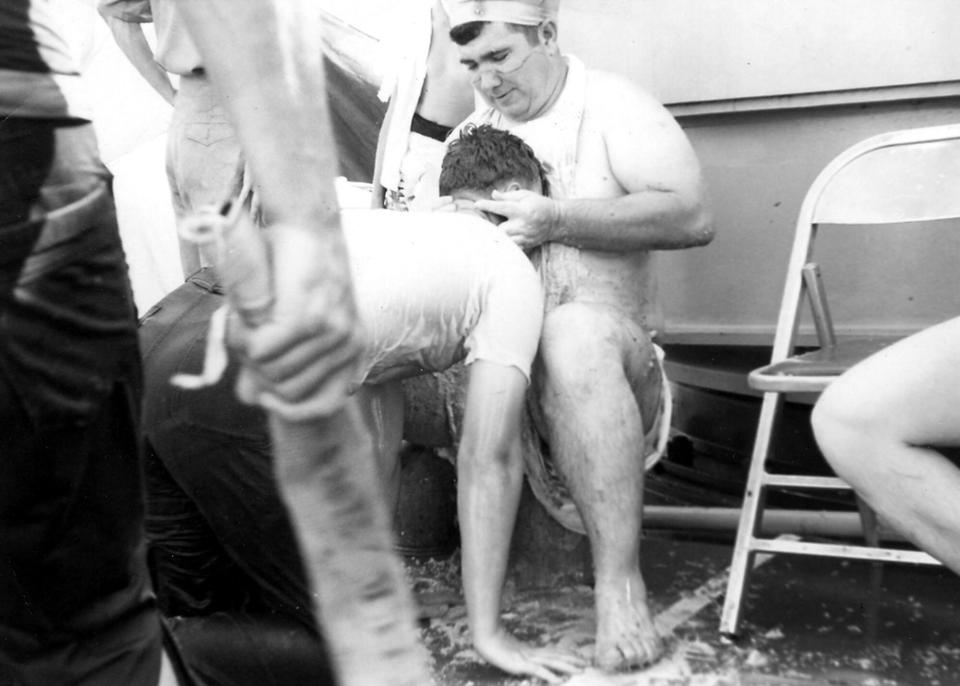
Vintage photographs by Dzintars Dale
After the initiation, each newly hardened shellback could clean up and then go to the barber for a crew cut, to try to salvage what was left of their hair. He was then issued a card and a certificate that proved he made the crossing.
It's been decades since Schmidt participated in the ceremony, and he says what he experienced crossing the equator no longer happens on Navy ships.
RELATED: Prince Harry Salutes Navy Servicemen in New Photos from Surprise Pearl Harbor Visit on Veterans Day
"These days it's quite different," he says, adding that the initiation isn't as brutal as it used to be. Another difference, he adds, is that sailors now have the option to skip the ceremony all together.
"In my day, you couldn't opt out. If you tried to opt out, you got this even worse," Schmidt says. "Just go through it, get it over with, don't cry about it, come out the end and you'll be okay."
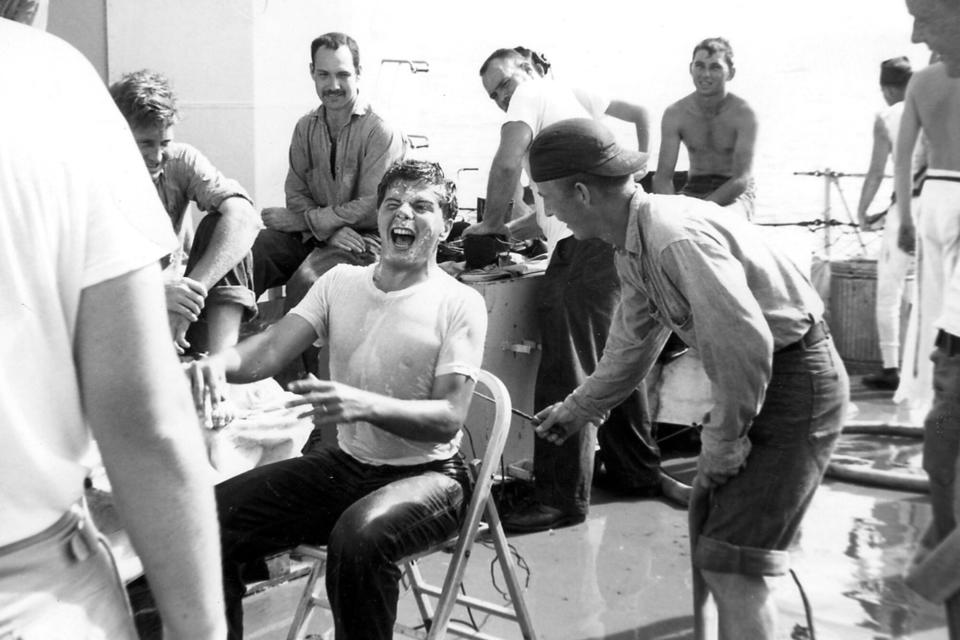
Vintage photographs by Dzintars Dale
Schmidt tells PEOPLE he sees a benefit to the ceremony — even when it involved more acute humiliation and pain.
"You gotta do something that you don't want to do," he says, equating it to training. "If you were at war and captured by the enemy, they would treat you pretty bad."
Looking back at his time as a pollywog, he adds: "In a way, it was fun at the time."

Vintage photographs by Dzintars Dale
In response to PEOPLE's request for comment, Navy spokesperson Charlie Spirtos confirms that things have changed aboard U.S. ships since the U.S. Department of Defense adopted policies and procedures to prevent, address and eliminate hazing across the Armed Forces.
"Line-crossing ceremonies to commemorate a ship's passage across the equator have been a naval tradition for centuries," Spirtos tells PEOPLE in a statement. "Today, the event is voluntary and is conducted to boost morale and foster a spirit of camaraderie and cohesion."
Spirtos says that other milestones "such as crossing the Antarctic Circle and deep-sea diving" are commemorated with similar rites of passage in the tradition of crossing the line.
RELATED: 4 Dead After Helicopter Crashes at U.S. Navy Base in Hawaii
"While the ceremony varies by ship and we cannot speak to specifics," he adds, "all Navy ceremonies are conducted with safety in mind and are compliant with The Department of Navy Policy on Hazing and the Navy Harassment Prevention and Military Equal Opportunity Program Manual."
That document includes in its definition of hazing "any form of initiation or congratulatory act that involves physically striking another person," "oral or written berating of another person with the purpose of belittling or humiliating," "abusive or malicious tricks," "shaving, greasing or painting another person," "forcing another person to consume food" and more.
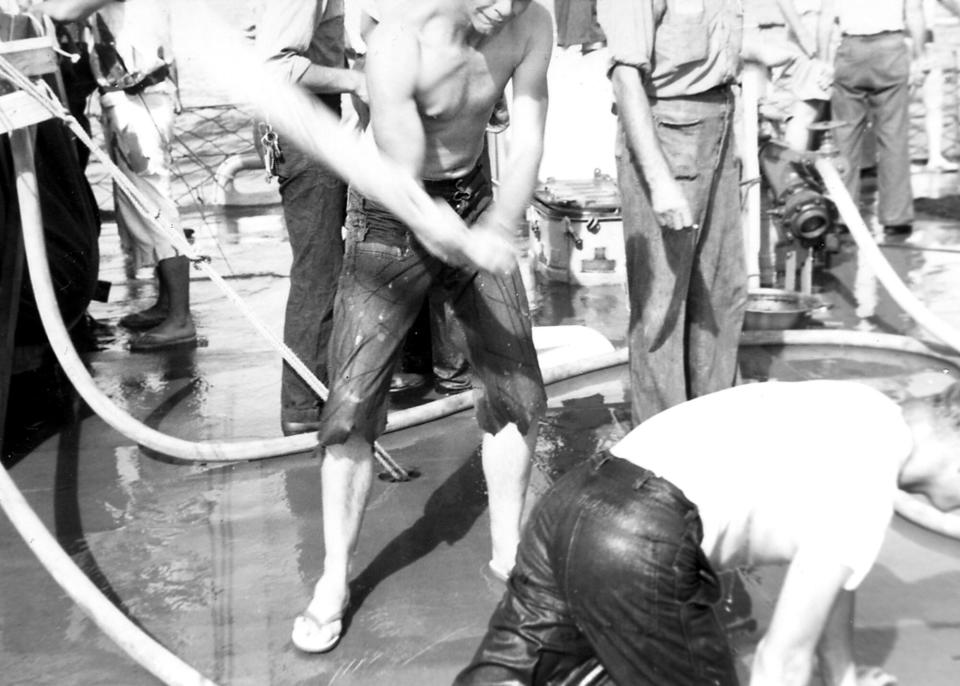
Vintage photographs by Dzintars Dale
There's good reason to avoid such behaviors in line-crossing ceremonies, according to the Department of Defense.
"Hazing violates a Service member's basic human dignity, jeopardizes combat readiness and mission accomplishment, weakens trust within the ranks, and erodes unit cohesion," the Department wrote in its Fiscal Year 2020 Annual Report for Hazing Prevention and Response in the Armed Forces.
The Pentagon is required to report hazing incidents to Congress annually. "The Department of Defense and the military services have a rich tradition of initiation ceremonies and rites of passage that at times have included inappropriate, cruel, or abusive behavior that placed service members at risk," the U.S. Government Accountability Office (GOA) wrote in its 2021 report to Congressional Committees.
From 2017 to 2020, the GOA reported 61 complaints in the Navy — including both those that were substantiated and unsubstantiated — to Congress but also said that in 2018, a "DOD survey suggests this significantly understated the number of hazing incidents by potentially tens of thousands of incidents" across all branches of the military.
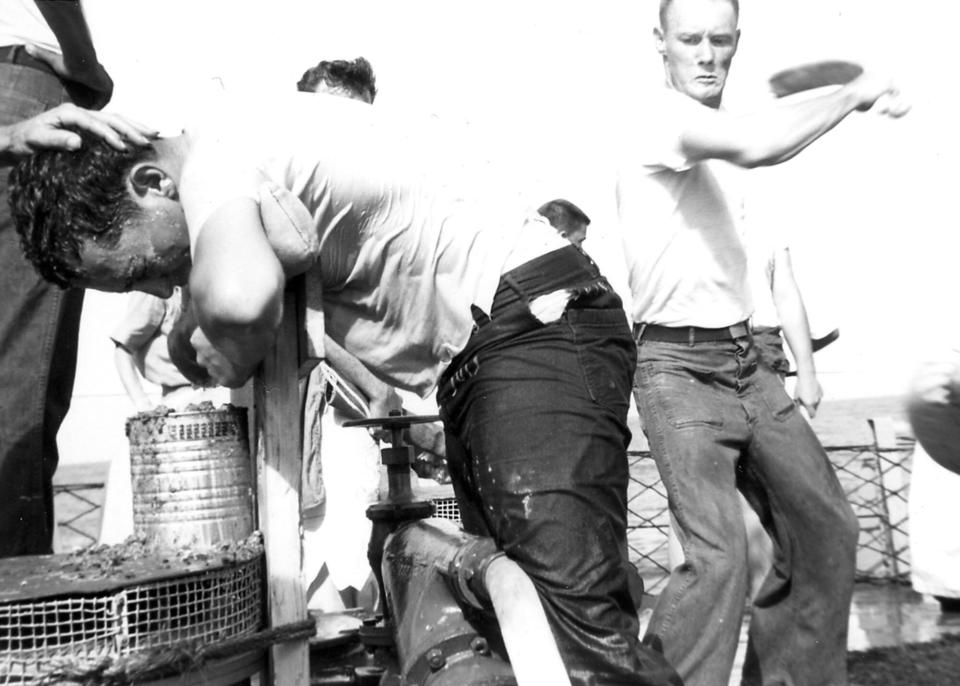
Vintage photographs by Dzintars Dale
Christina Vega, 29, served in the U.S. Navy from 2015 to 2020. She crossed the equator in 2019 on a guided missile cruiser.
Her initiation was a far cry from what Schmidt experienced, Vega, who now lives in Long Island, tells PEOPLE. For starters, pollywogs were given the choice to opt-out, though participation was incentivized by a day off work.
Of the nine people in her department, two were already shellbacks, she says. One person opted out, she adds, while the remaining six chose to participate in a line-crossing ceremony.
There were no food scraps collected days before. The night prior to crossing, pollywogs staged a talent show in honor of King Neptune and Davy Jones, a popular figure of sailor lore.
Shellbacks booed every act, according to Vega.
Never miss a story — sign up for PEOPLE's free daily newsletter to stay up-to-date on the best of what PEOPLE has to offer, from juicy celebrity news to compelling human interest stories.
At 6:30 the next morning, the pollywogs were awakened to a ruckus and had to dress in white shirts with their nicknames written on them. Vega wrote "Mrs. Durant" because her celebrity crush is NBA star Kevin Durant, she tells PEOPLE.
Then, she says, pollywogs had to crab walk while singing "Old McDonald Had a Farm" before breakfast was served. On the menu? Food color-dyed green eggs but no ham. After their meal, pollywogs did calisthenics and the initiation continued.
Two aspects of the ceremony resembled Schmidt's account of his experience, according to Vega. The first was getting sprayed with high-pressure fire hoses.
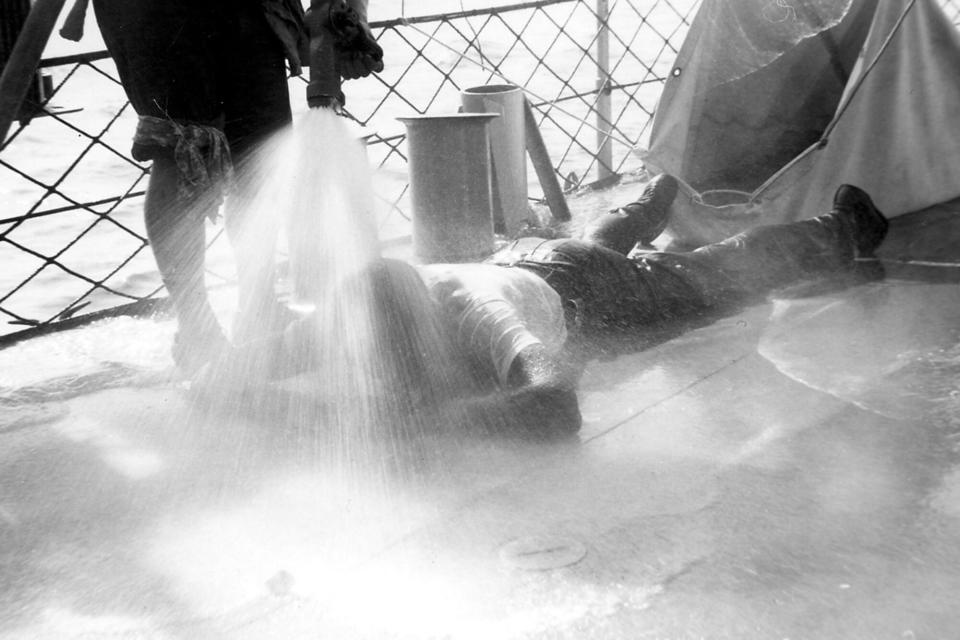
Vintage photographs by Dzintars Dale
The second was designating a sailor "the baby," which Vega refers to as "the royal baby."
Just as in Schmidt's day, the baby had the largest torso on the crew. For Vega, he sat shirtless with a maraschino cherry in his belly button, which was encircled with whipped cream.
Pollywogs were instructed to crawl up to him and eat the cherry from his navel as the final step in the initiation. According to Vega, the shellbacks told the pollywogs, "You don't eat it, then you're starting all over."
Vega refused and started again, she tells PEOPLE. But when she was inches away from the cherry for the second time, her initiators stopped her and congratulated her on becoming a shellback. In the end, no one was expected to actually eat the cherry.

